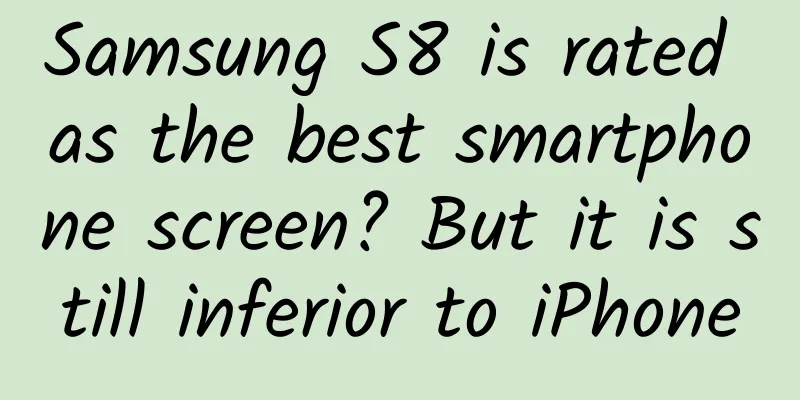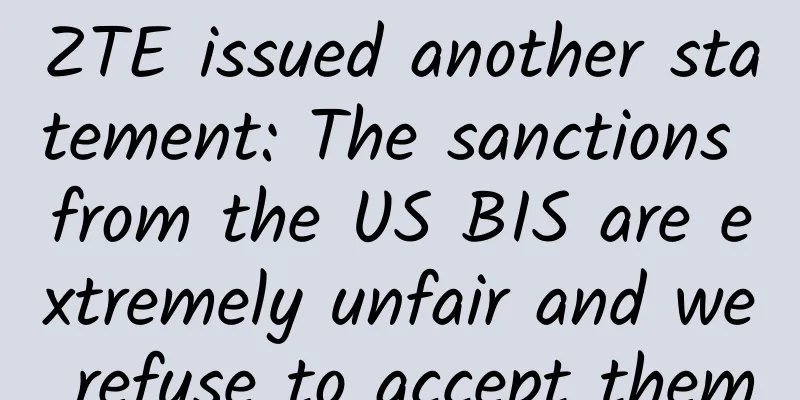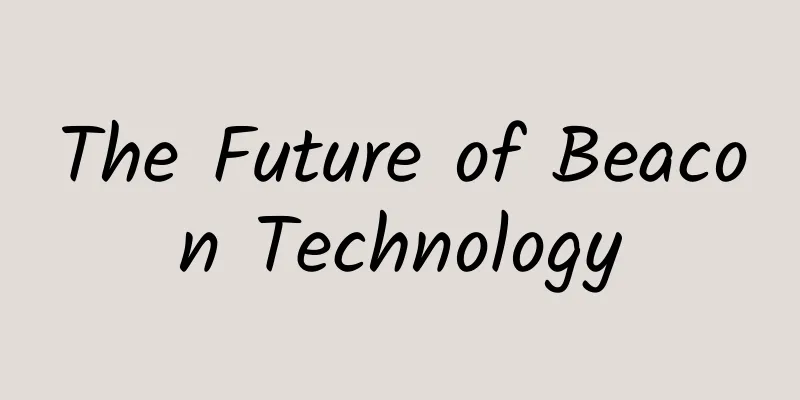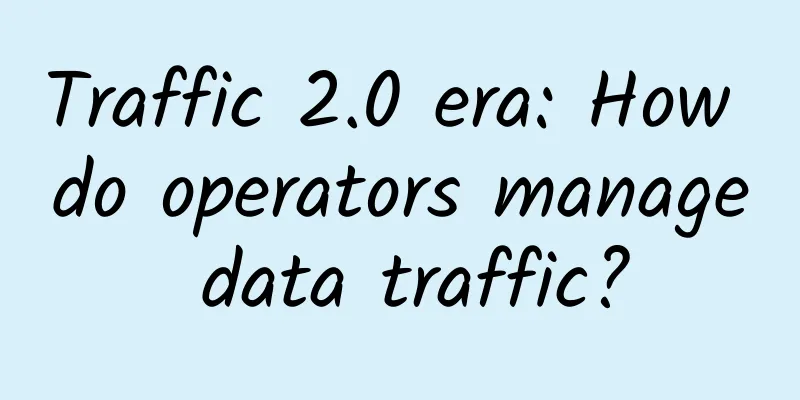Samsung S8 is rated as the best smartphone screen? But it is still inferior to iPhone

|
Recently, DisplayMate, a very authoritative professional website in the field of display evaluation, released the latest evaluation report on the display of Samsung's new flagship Galaxy S8. The result showed that its AMOLED display received very high evaluation from DisplayMate, not only winning the honor of "Best Performance Smartphone Display", but also winning the highest A+ rating in the history of DisplayMate website. I have to say, after reading the review report released by DisplayMate, the screen display effect of Galaxy S8 is indeed amazing. The boundary-breaking full-view curved screen design is refreshing and gorgeous. At the same time, the color gamut, color accuracy, contrast and other aspects are among the best in current smartphones. About six months ago, after Apple officially launched the iPhone 7 series flagship, DisplayMate also conducted an authoritative test on it. After comparing the test reports, we found that in fact, the LCD screen of the iPhone 7 series is still comparable to the OLED screen of the Galaxy S8 in several important aspects. Comparing the two display review reports of iPhone and Galaxy S8, we can find that iPhone 7 is still better than Galaxy S8 in many aspects. First of all, the iPhone 7 display is brighter. In DisplayMate's actual test of the Galaxy S8 screen, many people may have noticed the peak brightness data, that is, the full-screen white brightness reaches 1020 nits, while the iPhone's white peak brightness is only 705 nits, which shows that the Galaxy S8 seems to be better than the iPhone 7. However, everyone needs to pay attention to that it is the peak brightness when the automatic brightness is turned on, and the phone is unlikely to maintain it for a long time. After turning off the automatic brightness and manually raising the brightness to the highest, the stable white peak brightness of the Galaxy S8 actually fluctuates between 460 nits and 565 nits, while the iPhone 7 is 602 nits. It is not difficult to find that when the value is stable, the iPhone 7 is better in terms of display brightness. In addition, at the so-called highest peak brightness, the iPhone 7 is also more power-efficient, because the Galaxy S8 screen consumes 1.75W of power at only 160 nits, while the iPhone 7 screen consumes only 1.08 watts at 602 nits. This is the advantage of LCD screens. In addition to brightness, the second factor directly related to the experience is color. It is quite difficult for a screen to provide high color accuracy or excellent color by default, and it is even more difficult to adjust the multi-color gamut, so it requires more effort in panel design to adjust it just right. Providing accurate colors is conducive to seeing the real colors that content makers want to present, not thicker or darker. Sometimes you see bright and pleasing colors, which are visually good, but not what the maker wants to express. Comparing the two reports, we found that the color brilliance of the iPhone 7 series is more accurate than that of the Galaxy S8. In DisplayMate, JNCD is usually used as a unit to reflect the degree of color deviation. The smaller the value, the smaller the deviation. The iPhone 7 is rated 1.1 JNCD in the sRGB/Rec.709 color gamut and 1.0 JNCD in the DCI-P3 color gamut. The Galaxy S8 is rated 2.3 JNCD in the sRGB/Rec.709 color gamut, 2.7 JNCD in the DCI-P3 color gamut, and 2.7 JNCD in the Adobe RGB color gamut. Normally, a rating of 3 JNCD is a watershed. Color errors below this value are difficult to be clearly seen by the eyes. However, the two rating numbers of iPhone 7 are incredibly small, which can be described as extremely accurate color display. I didn’t expect that Apple’s factory calibration can be so good and at the top level in the industry. Of course, Galaxy S8 is also at the same top level. Image contrast accuracy iPhone 7 is still ahead in the test report. Although iPhone 7 has the highest real contrast ratio of 1762 among IPS mobile phone screens, it certainly has no advantage over OLED in terms of contrast, because OLED display screens can provide the best contrast with perfect black display. However, in terms of image contrast and brightness ratio, iPhone 7 is better than Galaxy S8 and can better reproduce colors. At this point, we need to look at the measured average gamma value of the screen, which is related to the overall brightness of the picture and the rate at which the brightness curve drops. To be precise, Gamma controls the overall brightness of the image, or reflects how quickly the brightness curve can climb up from the black area. When the average Gamma value is high, when the brightness increases, the signal climbs out of the black area more slowly, making the image brighter because of the darker black, but also showing less details in the dark area. Too low an average Gamma value will cause the image to look dull and gray because the dark area is too bright. The industry stipulates that the most ideal average Gamma value is 2.2, which matches the calibrated reference monitors used in movie studios. According to DisplayMate's test, iPhone 7 provides the most accurate average gamma of mobile device screens ever, which is 2.21. Galaxy S8 is 2.36, which DisplayMate considers to be "slightly too high", which means that the displayed image has a deeper black, but at the expense of dark details. Of course, within 2.5 is still within the acceptable range, but the deviation from professional standards is still a bit larger. Screen reflectivity iPhone 7 wins slightly In relatively bright lighting environments, the images displayed on the display of mobile devices are easily affected by reflected light, including fluorescent lamps, chandeliers, light coming in from windows, direct or simple indoor and outdoor daylight, etc., and the image quality will be significantly reduced, making it difficult to read the screen content. At this time, the display needs to provide excellent low reflectivity. In the actual measurement of high-brightness ambient light, the screen reflectivity of iPhone 7 is 4.4%, and the screen reflectivity is 4.5%. iPhone 7 is still slightly ahead. Of course, these two numbers are not better than the 9.7-inch iPad Pro (1.7% reflectivity) that offers anti-reflective AR coating, but they are already the lowest reflectivity level among the smartphones tested. summary: Although the Galaxy S8 screen is excellent, the iPhone 7 is not inferior. There are many more items that can be compared, which are not listed here one by one, including wide color gamut color management, high brightness environment contrast and viewing angle, display power consumption and HDR technology, etc. In some aspects, the iPhone 7 is better, and there are also commendable aspects of the Galaxy S8. For details, you can click to view the iPhone 7 report and Galaxy S8 report. In general, Apple has equipped the iPhone 7 series with the best LCD display in the history of the mobile phone industry. At least in DisplayMate's actual tests, the above aspects are better than Samsung Galaxy S8. However, OLED itself has many advantages, such as being lighter, thinner, with a wide color gamut, unparalleled contrast, faster response time, and better viewing angles, and can serve as the basis for flexible, curved, or edge-to-edge full-view screen designs. This year, Apple is basically certain that a new iPhone model will use an OLED screen. From the consumer's perspective, with Apple's strict requirements for product component specifications and superb professional factory calibration level, on the basis of creating the original top-level LCD mobile phone screen, if it is replaced with an OLED panel, it is equivalent to further integrating the advantages of the above series of OLED screens. Apple will definitely ensure that the new panel can fully present the technical characteristics of OLED, and will never allow it to lose to the best LCD panels in the same period of time. In any case, Apple is definitely a top-notch expert in the field of smartphone displays, and has made great contributions to the development of smartphone screens. As a competitor, Samsung is bound to be a catalyst for the accelerated development of the industry. However, in the final analysis, this is good news for us consumers, and we look forward to this year's new generation of iPhones, where Apple will once again show us top-notch display technology. As a winner of Toutiao's Qingyun Plan and Baijiahao's Bai+ Plan, the 2019 Baidu Digital Author of the Year, the Baijiahao's Most Popular Author in the Technology Field, the 2019 Sogou Technology and Culture Author, and the 2021 Baijiahao Quarterly Influential Creator, he has won many awards, including the 2013 Sohu Best Industry Media Person, the 2015 China New Media Entrepreneurship Competition Beijing Third Place, the 2015 Guangmang Experience Award, the 2015 China New Media Entrepreneurship Competition Finals Third Place, and the 2018 Baidu Dynamic Annual Powerful Celebrity. |
>>: It’s scary! Windows 10 can collect so much personal privacy
Recommend
Hackers attacked Sony and Blizzard crazily: finally caught by FBI
Everyone must remember the bad behavior of the ha...
Practical review: How to increase the number of paying users from 0 to 700 in 3 months?
I have seen many products that were poorly made. ...
What are the mainstream promotion methods of Xiaohongshu?
Recently, when my colleagues were working on Xiao...
What is the difference between Hong Kong servers and domestic mainland servers?
In recent years, more and more users choose Hong ...
How to cook a chicken with bare hands? Beat the chicken for 13 hours and 37 minutes
As a good friend of mankind, chickens are of grea...
Strategy Analytics: Automotive, transportation, logistics and IoT will drive growth in the location sector in 2020
Here maintains leadership in location-based platf...
#千万IP创科普# Is the brown pheasant a horse? Is it a chicken? Can it be eaten?
Shanxi Natural History Museum has launched #全民IP创...
Why are there so many "asymptomatic infections"? What's the difference between asymptomatic infections and positive tests?
As the weather gets colder, the COVID-19 outbreak...
7 months to get 10 million fans on Douyin_Free online viewing
From the beginning to profitability, we will brea...
Can bananas cure constipation? The fruit that really relieves constipation is...
If you average a week Fewer than 3 bowel movement...
We can drink cow's milk and goat's milk, so why does no one drink pig's milk?
Everyone has drunk cow's milk, goat's mil...
After 6 hours of review, I summarized these 5 user growth experiences
Growth is one of the most important tasks for an ...
How to plan fission activities? 4 key nodes!
The key to planning fission activities lies in th...
How much does it cost to produce the Xianyang wedding banquet mini program? Xianyang wedding banquet applet production price inquiry
How much does it cost to produce the Xianyang wed...
How does WeChat Reading use social networking to increase user growth?
WeChat, with 1 billion users, has long been at th...









